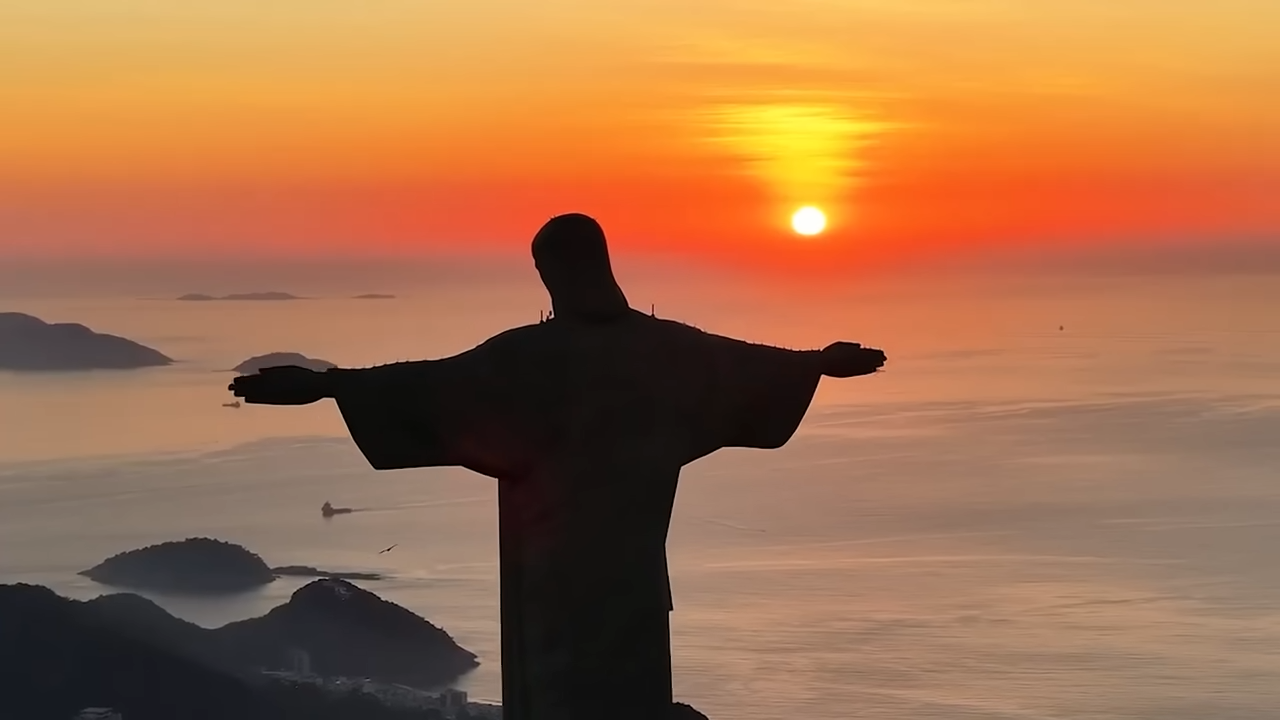
On a bright sunny day in Jerusalem, an extraordinary event unfolded on the Mount of Olives. Pilgrims, tourists, and locals, each going about their day, were startled by the sight of a radiant figure descending from the sky. Clothed in a glowing white robe and accompanied by luminous beings resembling angels, the figure captured the crowd’s attention instantly. His appearance was breathtaking, his presence serene yet powerful.

The first witnesses were a group of pilgrims, their eyes wide with awe as they identified the figure based on countless depictions in art and scripture: it was Jesus. His long hair, full beard, and piercing eyes matched the image etched in their minds. But what made this moment even more surreal was the host of angels surrounding him, their wings shimmering in the sunlight, enhancing the sacredness of the scene.
As the figure descended, the crowd grew larger, drawn by whispers spreading rapidly across the city. Social media buzzed with blurry yet captivating photos and videos of the event, sparking debates and discussions around the globe. What stood out to many was the sight of a white dove descending upon the figure, a symbol often associated with the Holy Spirit in Christian belief. It was as though this scene had leapt directly from the pages of the Bible into the modern world.

When the figure finally spoke, the crowd fell silent, their anticipation palpable. His words were profound yet simple: a call to love one another, forgive freely, and unite in compassion to build a world of harmony. His voice resonated deeply, reaching into the hearts of those who heard it. Tears of joy flowed, prayers rose in hushed tones, and many stood in silent gratitude for being part of such a miraculous moment.
Religious leaders and theologians worldwide grappled with the implications of the event. Was this truly the return of Jesus as prophesied in the Bible? Skeptics and scientists sought natural explanations, analyzing the phenomenon with rigorous scrutiny. Yet, even in their debates, the impact of the moment was undeniable.
The Bible speaks of the second coming of Christ as a dramatic event, filled with unmistakable signs: Jesus descending in glory, surrounded by angels, visible to all. For centuries, believers have studied these prophecies, waiting for the promised day of redemption and restoration. Many wondered if this event fulfilled those ancient descriptions or if it was another mysterious occurrence meant to inspire reflection.

While similarities to biblical prophecy were striking, key differences left questions unanswered. The Bible’s account of Jesus’s return associates it with global judgment and the establishment of God’s kingdom on Earth—a culmination of history and the ultimate triumph over evil. This recent event, however, emphasized peace and unity rather than judgment, leading some to speculate about its true nature.
Could it be the Antichrist, as described in Revelation? The Antichrist, a figure known for false miracles and deception, is said to mimic the works of Christ to lead people astray. Others pointed out the possibility of a hoax or mass illusion, though the consistency across numerous eyewitness accounts and video evidence made this explanation seem less likely.
Beyond the debates, the event reignited discussions about faith, unity, and the role of spirituality in a divided world. Jesus’s message of love and forgiveness echoed powerfully in a time marred by conflict, injustice, and polarization. For many, this was a reminder of the enduring relevance of his teachings.

The angels who accompanied the radiant figure were seen by some as divine messengers, their presence emphasizing the sacredness of the moment. Angels, revered across cultures and religions, symbolize guidance, protection, and the connection between the divine and humanity. Their appearance alongside the figure further fueled the belief that this was no ordinary event.
Yet, skepticism persisted. Was this a genuine miracle or a cleverly orchestrated deception? Could the figure have been a false prophet, or was it a moment of divine intervention meant to guide humanity? The answers remain elusive, but the event left an indelible mark on those who witnessed it.
The message delivered that day continues to inspire. It calls humanity to reflect on shared values—love, unity, and forgiveness—and to strive for a world where compassion overcomes division. Whether seen as a miraculous sign, a spiritual awakening, or a profound mystery, the event on the Mount of Olives reminds us of the power of faith and the enduring hope for a better future.
In the end, the question of whether this was truly Jesus or a divine sign may never be definitively answered. What remains certain is the impact it has had on millions, encouraging them to live with purpose, kindness, and an unwavering belief in the possibility of a brighter tomorrow.


